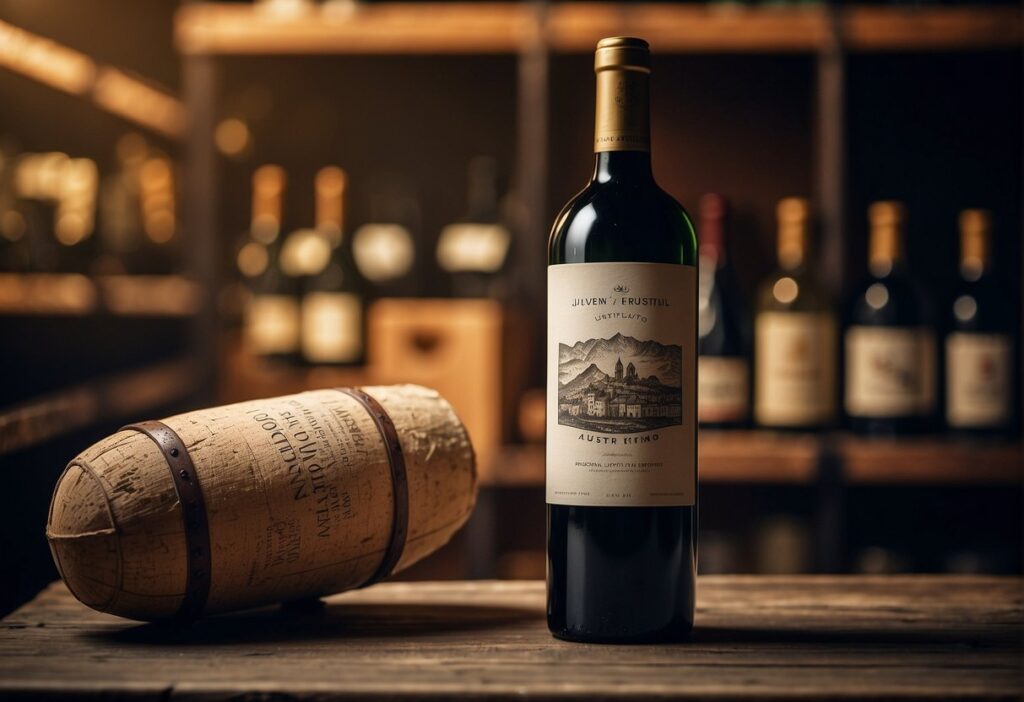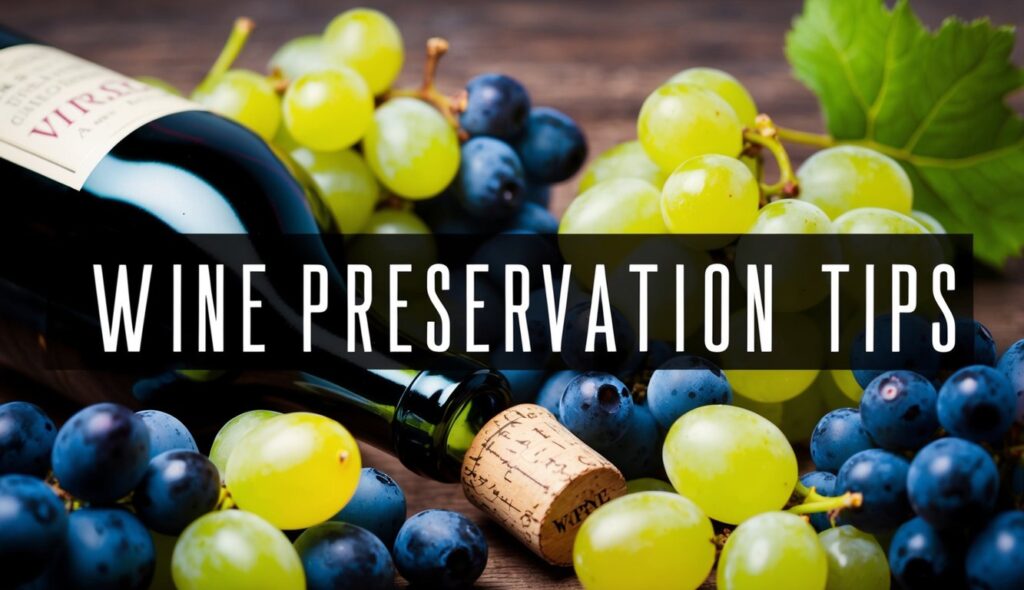Storing wine properly is important to maintain its quality and taste. Whether you have a large wine collection or just a few bottles, finding the right wine storage solutions can make all the difference. You might consider simple wine racks, which can be customized to fit small spaces or larger collections. For larger, more sophisticated collections, consider installing a dedicated wine cellar.

Creating an ideal environment ensures your wine ages well and retains its flavor. Factors like temperature, humidity, and light play essential roles in wine storage. These can be managed effectively with the right equipment. Exploring solutions like cooling units and specialized wine cabinets can provide you with effective ways to protect your wine collection.
If you’re into do-it-yourself projects, you can also build wine storage options at home. Options like a removable wine rack or under-the-stair storage allow flexibility and creativity. For a more professional touch, companies like Wine Racks America offer design services, shipping, and financing for wine cellars of any size and style.
Understanding Wine Storage Essentials

Proper wine storage is crucial to preserving the flavor and quality of your wine collection. Key factors include humidity levels and light exposure, both of which can significantly impact wine. Ensuring the right conditions will aid in maintaining your wine’s optimal taste and longevity.
Ideal Humidity Levels for Wine Preservation
Humidity plays a major role in wine preservation. Too much moisture can lead to mold growth, which is detrimental to both corks and labels. On the other hand, low humidity levels can dry out corks, allowing air to seep in and spoil the wine. Maintaining humidity levels between 50% and 70% is ideal. Using a dedicated wine cellar cooling system can regulate these conditions effectively.
If you’re storing wine at home without a wine fridge, placing a bowl of water nearby can help balance humidity. Consider using a hydrometer to monitor the levels regularly. By ensuring proper humidity, you protect your investment and ensure each bottle retains its quality over time.
The Impact of Light Exposure on Wine Quality
Light exposure, particularly from direct sunlight, can have a harmful effect on wine. Ultraviolet (UV) rays can break down the wine’s chemical compounds, leading to unintended changes in flavor and aroma. To safeguard your wine collection, store bottles in a dark place or use a wine fridge with UV-filtering glass.
If you lack these solutions, consider wrapping bottles in cloth or storing them in a box. This prevents light from affecting the contents. Minimizing light exposure is essential for preserving the nuanced flavors and characteristics you’re expecting from each bottle, thus maintaining optimal wine quality.
Types of Wine Storage Solutions
Choosing the right wine storage solution can enhance the longevity and flavor of your collection. Various options include versatile wine racks, elegant wine cabinets, and innovative wine coolers, each providing unique benefits for different needs and preferences.
Wine Racks and Their Varieties
Wine racks provide a practical and stylish way to store your collection. Available in many designs, they range from simple wooden stands to elaborate metal structures. Wall-mounted wine racks are perfect for small spaces and can hold 6-12 bottles. For larger collections, consider a freestanding rack that can fit into a dedicated wine room—you might also set up wine cellars with elaborate racking installations.
Different materials like wood, metal, and wrought iron provide both durability and aesthetic appeal. For those on a budget, smaller countertop racks offer functionality without taking up too much room. You can find folding racks that allow easy storage when not in use. Such versatility makes wine racks an essential option for collectors at any level.
Luxury Wine Cabinets and High-End Options
For those seeking a blend of functionality and aesthetics, luxury wine cabinets are an excellent choice. These structures often double as a piece of art, enriching your interior decor. Typically crafted from high-quality materials like mahogany or oak, they preserve the elegance while offering optimal storage conditions.
Some sophisticated wine cabinets are equipped with temperature and humidity controls, creating the perfect environment for your collection. A stylish addition to any room, they cater to serious collectors who value both form and function. For a modern touch, wine wall cabinets provide both storage and visual appeal, enhancing homes or restaurants with their artistic designs.
Innovative Wine Refrigerators and Coolers
Wine refrigerators or coolers offer advanced storage options to maintain your wine at the ideal temperature. Specifically designed for precision, they can store reds, whites, and sparkling wines at their respective optimal temperatures. Compact models fit snugly in small apartments, while larger versions can handle a more extensive collection.
Technology features such as dual-zone cooling allow you to store different types of wines in the same unit, keeping them ready to serve at any time. Some models also include UV-resistant glass doors, protecting your wine from harmful light while maintaining a sleek appearance. Innovative features make wine fridges a favorite among enthusiasts seeking convenience and efficiency.
Designing a Custom Wine Cellar
Creating a custom wine cellar involves careful planning, selecting appropriate cooling systems, and choosing the right storage solutions for your collection. Each step is crucial to preserving the quality and longevity of your wines.
Planning Your DIY Wine Cellar
Embarking on a DIY wine cellar project requires thorough preparation. Start by identifying the best location in your home. Basements are an ideal spot due to their naturally cooler temperatures and humidity. Insulation is critical to maintain a consistent environment, so invest in high-quality insulation materials.
Layout planning is essential. Consider how many bottles you want to store and how they will be organized. Use a mix of racks, shelves, and cabinets to maximize space while maintaining accessibility. Building a wine cellar may involve permits, so check local regulations before construction begins. If you seek guidance, Wine Racks America offers resources and consultations.
Choosing the Right Wine Cellar Cooling Systems
Wine cellar cooling systems are vital for controlling temperature and humidity. Too warm, and wines may spoil; too cold, and they may age prematurely. Ideal temperature is around 55°F (13°C), with humidity at 60-70%.
There are several cooling options available. Self-contained units are easy to install and cost-effective, perfect for small to medium cellars. For larger spaces, split systems might be better as they offer more power and flexibility. Research different brands and models to find the best fit for your space and budget. Consulting with experts, such as those at Custom Wine Cellar, can provide valuable insights into professional installation options.
Custom Wine Storage Solutions for Collections
Custom wine storage solutions enhance the overall aesthetic and functionality of your cellar. Consider the types of wine you own—red, white, or sparkling—as they require different storage conditions. Modular racks can be tailored to accommodate varied bottle sizes and are expandable as your collection grows.
If aesthetics are important, explore options like customized cabinetry or vintage-style racks that match your home decor. Some companies, like Wine Rack Concepts, specialize in bespoke designs that reflect personal style while ensuring optimal wine preservation. For high-end collections, implementing security features like climate-controlled cabinets and lockable storage may be advantageous.
Integrating Wine Storage into Living Spaces

Integrating wine storage into living areas can both enhance the visual appeal of your home and make your wine more accessible. This section will explore practical ways to incorporate wine storage into everyday spaces like the kitchen and home bar.
Wine Storage Ideas for the Kitchen
The kitchen can be a key location for wine storage due to its centrality and functionality. You can install a wine wall that not only stores bottles vertically but also complements your kitchen design. These walls can be fitted with various materials like wood or metal, depending on your style preferences.
For a more compact solution, consider adding a wine rack to your kitchen island. This can turn unused space into a handy storage area, keeping a variety of wines within reach as you cook or entertain guests.
Another functional idea is a wine cooler integrated into your cabinetry. This provides controlled temperature settings to keep your bottles in the best condition while seamlessly blending into your kitchen.
Adding a Wine Cabinet to Your Home Bar
A home bar offers a perfect spot to showcase your wine selection. Installing a wine cabinet next to or behind the bar can add both storage and style. Choose a cabinet that fits the space without overwhelming the area, perhaps one that also has additional storage for glasses and bar accessories.
A wine cabinet can be both manual and electric, allowing you to control the temperature for ideal serving conditions. This makes it easier to pair your wine with your favorite cocktails or snacks.
By adding a custom-built option, you can tailor the cabinet finish and size to match your home bar decor, creating a unified look across your space. Integrating LED lighting can further highlight your collection, making your home bar a true centerpiece.
Wine Storage Tips and Best Practices

Keeping your wine at the right temperature is crucial. Red wines should be kept between 50 and 65 degrees Fahrenheit. Meanwhile, white wines fare better at slightly cooler temperatures, between 45 and 55 degrees Fahrenheit. Use a thermometer to monitor and maintain these levels.
Humidity is another factor to consider. Aim for a relative humidity between 50-75%. This helps keep the cork moist and prevents air from seeping in. Be cautious, though, as excess moisture can lead to mold growth. You might place a small hygrometer in your storage area to ensure conditions stay optimal.
When storing wine, ensure bottles are on their sides. This keeps the cork moist and seals the bottle shut, preventing air from entering. The method is essential for long-term storage. Consider using a rustic wine rack to not only serve as an aesthetic piece but also to arrange your bottles properly.
Avoid placing wine near any vibrations. Movement can disturb the wine’s sediment and negatively affect its aging process. Keep your collection in a tranquil place, away from household appliances that shake or hum.
Darkness preserves wine well. Exposure to light, particularly sunlight, can degrade wine quality. A dim, shaded space such as a wine cellar HQ or a closet is ideal for storage.
Lastly, make sure to keep your wine in a location where it can sit undisturbed. This minimizes the chance of accidental breakage or movement that can spoil the wine.

